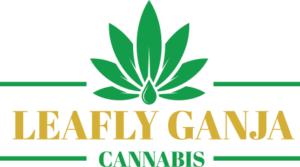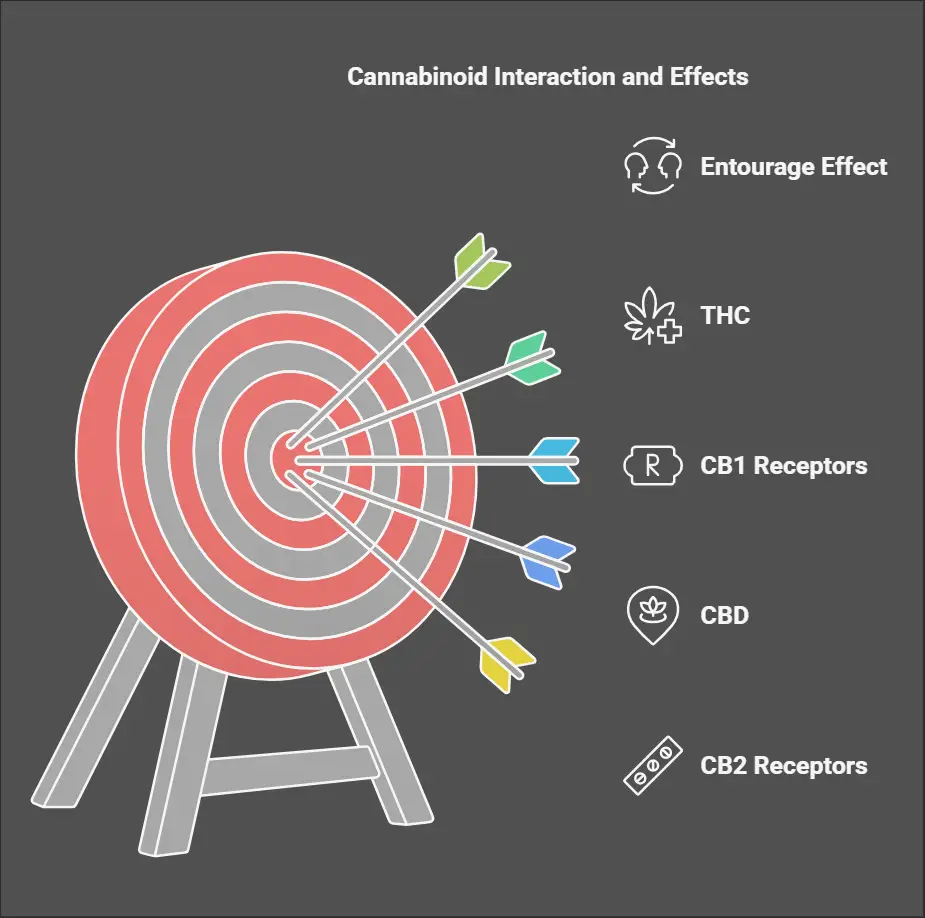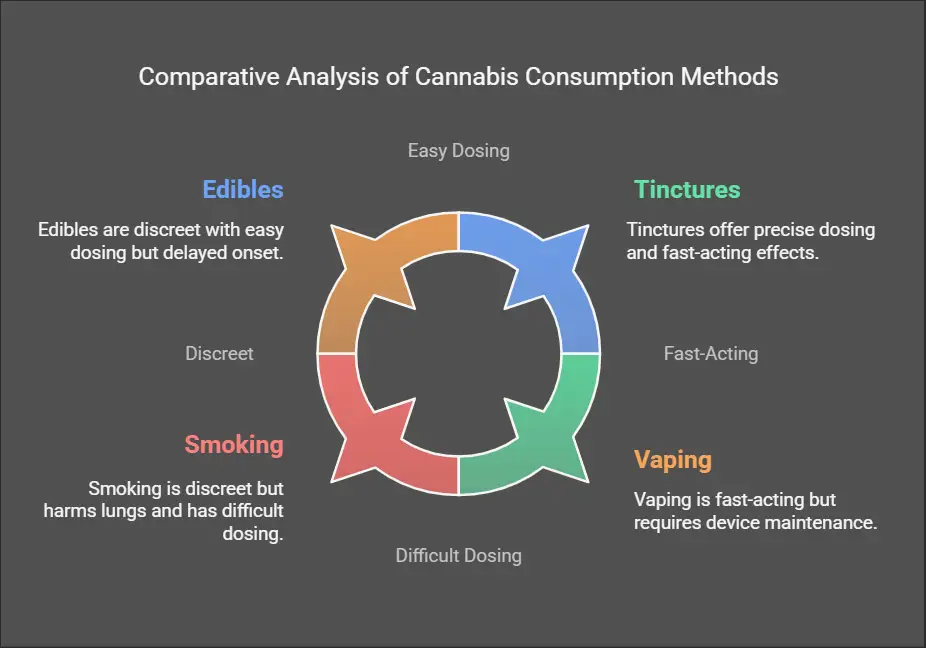Introduction: Why Edible Dosing Matters
Cannabis edibles have become a cornerstone of modern cannabis consumption, offering a discreet, long-lasting, and enjoyable way to experience the plant’s benefits. However, proper dosing is one of the most critical aspects of enjoying edibles. Unlike smoking or vaping, edibles take longer to kick in and can produce intense effects if not consumed responsibly. This guide will walk you through everything you need about edible dosing, from understanding potency labels to calculating your ideal dose. Whether you’re a first-time user or a seasoned enthusiast, mastering edible dosing ensures a safe and enjoyable experience.
Table of Contents
- Introduction: Why Edible Dosing Matters
- What Are Cannabis Edibles? A Deep Dive
- 2.1 The Origins of Cannabis Edibles
- 2.2 Why Edibles Are Gaining Popularity
- The Science Behind Edibles
- 3.1 Chemical Composition of Cannabis
- 3.2 How THC and CBD Interact with the Body
- Step-by-Step Guide to Edible Dosing
- 4.1 Understanding Potency Labels
- 4.2 Calculating Your Ideal Dose
- 4.3 Tips for Safe Consumption
- Consumption Methods: Comparing Edibles to Other Forms
- Effects of Edibles: What to Expect
- Growing Your Cannabis for Edibles
- 7.1 Ideal Growing Conditions
- 7.2 Step-by-Step Cultivation Process
- Edibles vs. Other Strains: A Comparative Analysis
- Consumption vs. Quality: Finding the Sweet Spot
- FAQs: Answering Your Burning Questions
- Conclusion: Elevate Your Edible Experience
What Are Cannabis Edibles? A Deep Dive
2.1 The Origins of Cannabis Edibles
Cannabis-infused foods date back thousands of years, with ancient cultures using them for medicinal and ceremonial purposes. In modern times, edibles have evolved into a diverse category of products, ranging from gummies and chocolates to beverages and savory dishes. Their popularity stems from their convenience, discretion, and ability to deliver a controlled dose of cannabinoids.
2.2 Why Edibles Are Gaining Popularity
Edibles appeal to a broad audience because they offer a smoke-free alternative to traditional cannabis consumption. They’re also highly versatile, allowing users to enjoy cannabis in creative and delicious ways. Additionally, edibles provide a longer-lasting high than inhalation methods, making them ideal for those seeking sustained relief or relaxation.
The Science Behind Edibles
3.1 Chemical Composition of Cannabis
Cannabis contains over 100 cannabinoids, with THC (tetrahydrocannabinol) and CBD (cannabidiol) being the most prominent. Below is a breakdown of their chemical composition:
Compound Percentage (%) Role
THC 10–30% Psychoactive compound
CBD 0.5–20% Non-psychoactive, therapeutic
CBG Trace amounts of Minor cannabinoid
These compounds interact with the body’s endocannabinoid system, influencing mood, pain perception, and appetite.
Let’s break down the introduction and explain why edible dosing matters in cannabis consumption.
Why Edible Dosing Matters
- Edibles as a Popular Consumption Method
- Cannabis edibles have gained immense popularity because they offer a discreet, convenient, and long-lasting way to consume cannabis. Unlike smoking or vaping, edibles don’t produce smoke or odor, making them appealing to those who want to avoid inhalation or public attention. Additionally, the effects of edibles tend to last longer, providing extended relief or enjoyment.
- The Importance of Proper Dosing
- While edibles are an excellent option, their effects can be unpredictable if not consumed responsibly. This is primarily due to two factors:
- Delayed Onset: When you eat an edible, the cannabinoids (like THC) must pass through your digestive system and liver before entering your bloodstream. This process can take anywhere from 30 minutes to 2 hours, which often leads people to mistakenly think the edible “isn’t working” and consume more. Overconsumption can result in overwhelming and uncomfortable effects.
- Potency Variability: Edibles’ potency can vary significantly depending on the product and manufacturer. Users may unintentionally consume too much without understanding how to read labels or calculate doses.
- Risks of Improper Dosing
- Consuming too much THC can lead to unpleasant side effects such as anxiety, paranoia, dizziness, nausea, or even panic attacks. These experiences can deter people from trying edibles again and may also pose safety risks. On the other hand, under-dosing might leave users feeling like the edible had no effect, leading to frustration or wasted product.
- Tailoring the Experience
- Everyone’s tolerance to cannabis is different, influenced by factors like body weight, metabolism, frequency of use, and individual sensitivity. Mastering edible dosing allows users to customize their experience based on their goals—relaxation, pain relief, sleep aid, or simply enjoying a mild high.
- Educating Consumers
- The guide in the introduction aims to empower consumers with knowledge about edible dosing. Key topics include:
- Understanding potency labels (e.g., milligrams of THC per serving).
- Learning how to calculate your ideal dose based on your tolerance and desired effects.
- Tips for safe consumption, such as starting low and going slow.
- Who Benefits from This Knowledge?
- First-Time Users: Beginners need clear guidance to avoid accidental overconsumption and ensure a positive first experience with edibles.
- Seasoned Enthusiasts: Even experienced users can benefit from refining their dosing strategies to achieve specific outcomes or explore new products safely.
3.2 How THC and CBD Interact with the Body
THC binds to CB1 receptors in the brain when consumed, producing psychoactive effects such as euphoria and relaxation. Conversely, CBD interacts with CB2 receptors, offering anti-inflammatory and calming properties without the “high.” Together, these cannabinoids create a synergistic effect known as the “entourage effect,” enhancing the overall therapeutic potential of cannabis.
Step-by-Step Guide to Edible Dosing
4.1 Understanding Potency Labels
Before consuming an edible, it’s crucial to understand its potency. Most edibles are labeled with the total amount of THC or CBD per serving and package. For example:
- A chocolate bar may contain 100mg of THC total, divided into 10 servings of 10mg each.
- Always start with the lowest recommended dose, especially if you’re new to edibles.
4.2 Calculating Your Ideal Dose
Finding the correct dose depends on your tolerance, experience level, and desired effects. Here’s a general guideline:
- Beginners: Start with 1–5mg of THC for mild effects.
- Intermediate Users: Try 5–10mg for a moderate experience.
- Experienced Users: Consume 10–25mg for a more potent high.
4.3 Tips for Safe Consumption
- Start Low, Go Slow: Begin with a small dose and wait at least 2 hours before consuming more.
- Read Labels Carefully: Pay attention to serving sizes and total potency.
- Stay Hydrated: Drink water to stay hydrated and mitigate dry mouth.
- Choose the Right Environment: Consume edibles in a comfortable, familiar setting.
Consumption Methods: Comparing Edibles to Other Forms
While edibles are a popular choice, other consumption methods include smoking, vaping, tinctures, and topicals. Each technique offers unique advantages:
Method Pros Cons
Edibles Long-lasting, discreet, Delayed onset, harder to dose
Smoking Fast-acting, easy to control, Harms the lungs, and has shorter effects
Vaping Discreet and smoother than smoking Device maintenance is required
Tinctures Precise dosing, fast-acting Strong taste
Effects of Edibles: What to Expect
The effects of edibles typically begin within 30–90 minutes after consumption and can last 4–6 hours. Users often report feelings of relaxation, euphoria, and enhanced sensory perception. However, individual experiences may vary based on dosage, strain, and personal tolerance.
Growing Your Cannabis for Edibles
7.1 Ideal Growing Conditions
Cannabis thrives in environments with temperatures between 70–85°F (21–29°C), ample sunlight, and well-draining soil. Indoor growers can replicate these conditions using grow lights, fans, and hydroponic systems.
7.2 Step-by-Step Cultivation Process
- Germinate Seeds: Soak seeds in water for 24 hours, then transfer them to moist soil.
- Seedling Stage: Provide 18 hours of light daily and maintain humidity levels around 60%.
- Vegetative Stage: Increase light exposure to 20 hours per day and fertilize with nitrogen-rich nutrients.
- Flowering Stage: Switch to a 12/12 light cycle to trigger flowering. Monitor trichomes for harvest readiness.
- Harvest and Cure: Trim buds, dry them in a dark, ventilated space, and cure them in airtight jars for 2–4 weeks.
Edibles vs. Other Strains: A Comparative Analysis
| Strain THC Content Effects Best For |
| Charlotte’s Web | High CBD | Low THC | Calming | non-psychoactive | Therapeutic use |
| OG Kush | High THC | Relaxing | euphoric | Recreational use | |
| ACDC | Balanced THC/CBD | Mild | focused relief | Daytime use | |
Consumption vs. Quality: Finding the Sweet Spot
Dosage Range Quality of Experience Recommended For
| Low (1–5mg) | Subtle | relaxing | Beginners |
| Medium (5–10mg) | Balanced | mild euphoria | Regular users |
| High (10–25mg) | Intense | long-lasting | Experienced users |
FAQs: Answering Your Burning Questions
Q1: How long do edible effects last?
A1: Edible effects typically last 4–6 hours, with some residual effects lasting up to 12 hours.
Q2: Can I overdose on edibles?
A2: While fatal overdoses are rare, consuming too much can lead to overwhelming psychological effects. Stick to recommended dosages.
Q3: What should I do if I consume too much?
A3: Stay calm, hydrate, and rest in a safe environment. Effects will subside over time.
Conclusion: Elevate Your Edible Experience
Mastering edible dosing is key to unlocking the full potential of cannabis-infused treats. Understanding the science, respecting safe consumption practices, and experimenting with different strains and dosages can tailor your edible experience to suit your needs. Whether you're seeking relaxation, creativity, or therapeutic relief, edibles offer a versatile and enjoyable way to explore the benefits of cannabis.




